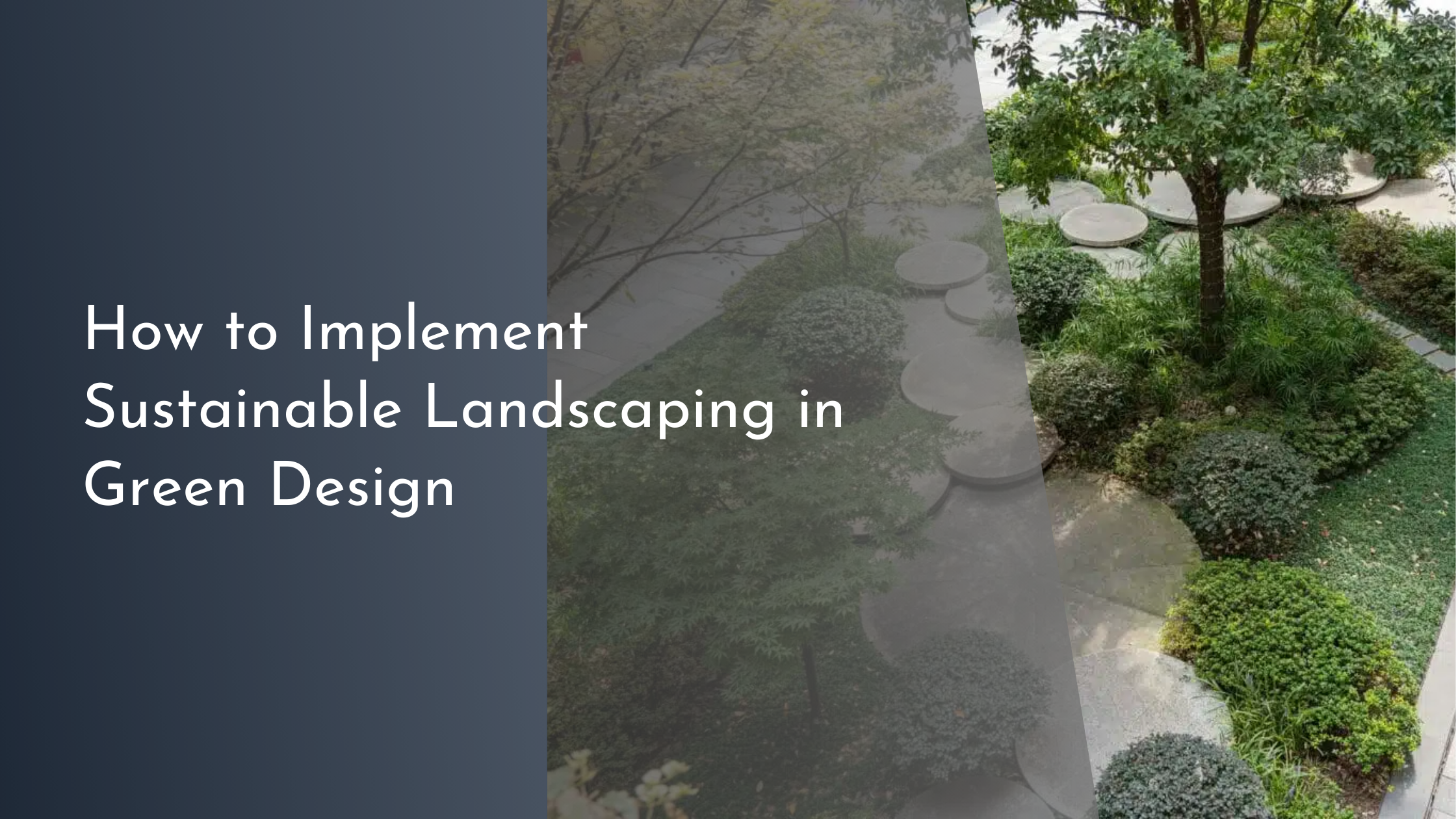How to Implement Sustainable Landscaping in Green Design
Sustainable landscaping is an essential component of green design, offering an eco-friendly approach that minimizes environmental impact and promotes biodiversity. With growing awareness about climate change and the need for conservation, homeowners and businesses are increasingly prioritizing sustainable practices in their landscaping projects. This article explores how to implement sustainable landscaping within the framework of green design, focusing on understanding its principles, choosing suitable materials, incorporating native plants, and creating a plan for longevity.
Understanding the Principles of Green Design
Green design is centered around creating environments that are both functional and sustainable, aiming to reduce negative impacts on the environment while enhancing quality of life. It incorporates principles such as energy efficiency, resource conservation, and pollution reduction. When applied to landscaping, green design emphasizes the use of renewable resources, reduction of chemical usage, and the promotion of biodiversity. Understanding these principles is crucial for implementing a landscape that aligns with the values of sustainability.
Another key principle of green design in landscaping is the integration of natural systems. This involves using techniques such as rainwater harvesting, composting, and efficient irrigation systems. These techniques not only help conserve water but also reduce the need for chemical fertilizers and pesticides, ultimately leading to healthier ecosystems. By aligning landscaping practices with green design principles, you can create outdoor spaces that are not only aesthetically pleasing but also environmentally responsible.
Choosing Eco-Friendly Landscaping Materials
Selecting eco-friendly materials is a foundational step in sustainable landscaping. Natural stone, reclaimed wood, and recycled materials are excellent choices that minimize environmental impact. These materials not only reduce waste but also often require less energy to produce and transport than conventional options. For example, using permeable pavers or gravel can help manage stormwater runoff and promote groundwater recharge, contributing to a healthier environment.
In addition to hardscape materials, it’s important to consider soil amendments and mulches that support ecological balance. Organic mulches, such as wood chips or straw, decompose naturally and enrich the soil, while avoiding synthetic chemical additives. Choosing locally sourced materials can also reduce transportation emissions and support local economies. By carefully selecting eco-friendly materials, you can create a landscape that is both beautiful and sustainable.
Incorporating Native Plants and Biodiversity
Incorporating native plants into your landscape design is a vital aspect of fostering biodiversity and sustainability. Native plants are adapted to local climates and soil conditions, requiring less water and maintenance compared to non-native species. They also provide essential habitats and food sources for native wildlife, including pollinators like bees and butterflies. By planting a diverse range of native species, you can support a balanced ecosystem and enhance the resilience of your landscape.
Biodiversity can also be promoted by creating varied habitats, such as wildflower meadows, shrub borders, or water features. These elements attract different species of birds, insects, and amphibians, contributing to a thriving ecosystem. Additionally, using companion planting techniques can naturally deter pests and reduce the need for chemical interventions. By prioritizing native plants and biodiversity, you create a sustainable and dynamic landscape that nurtures the environment.
Creating a Maintenance Plan for Longevity
A sustainable landscape requires a thoughtful maintenance plan to ensure its long-term success. Regular maintenance tasks, such as pruning, mulching, and monitoring plant health, are essential for keeping the landscape thriving. Implementing organic and natural pest control methods can also help maintain ecological balance, reducing the reliance on harmful chemicals. By scheduling regular maintenance checks, you can address issues promptly and keep your landscape in top condition.
Efficient water management is another critical element of a sustainable maintenance plan. Installing drip irrigation systems and using rainwater collection can significantly reduce water usage. It’s also important to adjust watering schedules based on seasonal needs and weather conditions to prevent overwatering. By incorporating these practices into your maintenance plan, you ensure that your landscape remains sustainable and resilient over time.
Sustainable landscaping is an integral part of green design, offering numerous benefits for the environment and human well-being. By understanding the principles of green design, choosing eco-friendly materials, incorporating native plants, and implementing a comprehensive maintenance plan, you can create outdoor spaces that are both beautiful and sustainable. Embracing these practices not only enhances the aesthetic appeal of your landscape but also contributes to the health and vitality of the planet.

